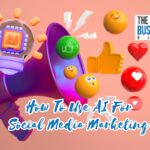Generative AI is one of the big buzzwords these days. It might seem like a special niche area fit only for techies, but you would be surprised at just how widely applicable it is.
Gaining a greater understanding of AI and generative AI in particular is useful for many different purposes, and it is likely that you could use it in different areas of life.
Let’s take a closer look at this new technological phenomenon and how it is reshaping many aspects of modern life.
We will discuss the origin of the technology, the mechanisms that enable it to function, and practical applications for everyday life.
Post Contents
Where Did Generative AI Come From?
AI has been around for some time at this point. It uses sophisticated algorithms to process large amounts of data and simulate human brain activity.

Generative AI is a practical application of AI for different purposes. It automatically produces content of different sorts by means of gathering data and synthesizing it according to different generative AI models.
The basic technology that underlies generative AI has actually been around since the 1960s as it has been being used in chatbots.
However, it is only since the creation of the Internet and very recently that the technology has been being applied to other types of content.
How Does It Work?
In order to utilize generative AI, you should start with a prompt. This may or may not involve words.
The prompt could be text, or it could also be an image or any number of other content types. Algorithms then go to work on processing it and coming up with new content in response.
For all manner of businesses, gen AI development services are available to help produce systems that will allow for content creation.
Modeling
Generative AI works off of specific models. These models combine different AI algorithms to represent content. Let’s take a look at a few different types of models.
Diffusion models. Diffusion models are generative models that involve a two-step process of forward and backward diffusion.
The first part adds background noise to the data, and the second breaks it down. The end result is new data. These models take longer to work out than other ones because the diffusion process can be lengthy.
Variational autoencoders. Variational autoencoders involve two neural networks, an encoder and a decoder. Upon receiving a prompt, the encoder brings about a compressed version of the data.
The encoder and decoder then work together to create a new representation of the data. It is a faster way of creating content than diffusion models, but content tends to be more simplistic.
Generative adversarial networks. Generative adversarial networks were the norm for generative AI until the very recent past.
It involves two neural networks, one of which generates new material, and a discriminator that breaks through to separate generated content from fake content.
Depending on a developer’s purpose, he or she will choose from among these models in the creation of material. It is also possible to use different models if usage will be varied across applications.

Applications
The big question, of course, is what you can do with generative AI. There are several different categories of usage that can be broken down into.
One is language. Generative AI can be used in marketing, code development, essay generation, or simple note-taking.
There is also the video aspect. Generative AI can be used in full-scale video creation, or image, design, or 3D modeling.
And finally, the technology can be used for audio purposes for music or voice generation. In short, you can basically create whatever kind of material you want, depending on your purposes.
Another practical usage is in synthetic data. When data either doesn’t exist or for whatever reason is restricted or cannot be accessed, it can be developed.
Generative AI uses its models to fill in data where it is lacking and still be able to come up with material nonetheless. Synthetic data creation uses a process called label-efficient learning to do this.
So if you’re looking to create a tool for your company, for example, a mobile app, look for a mobile app development company that uses generative AI tools in its app creation.
If you are in need of web help or chatbot creation, there are services available for these functions, as well.
The Future Is Bright
Generative AI will only continue to develop in the coming years. It will become more and more sophisticated and will have a wider range of applications.
There are some concerns about the possible creation of “deep fakes” and that people could create these things for nefarious purposes.
But legislators will have to stay on top of things and ensure that regulations are created and enforced to control these tendencies.





























